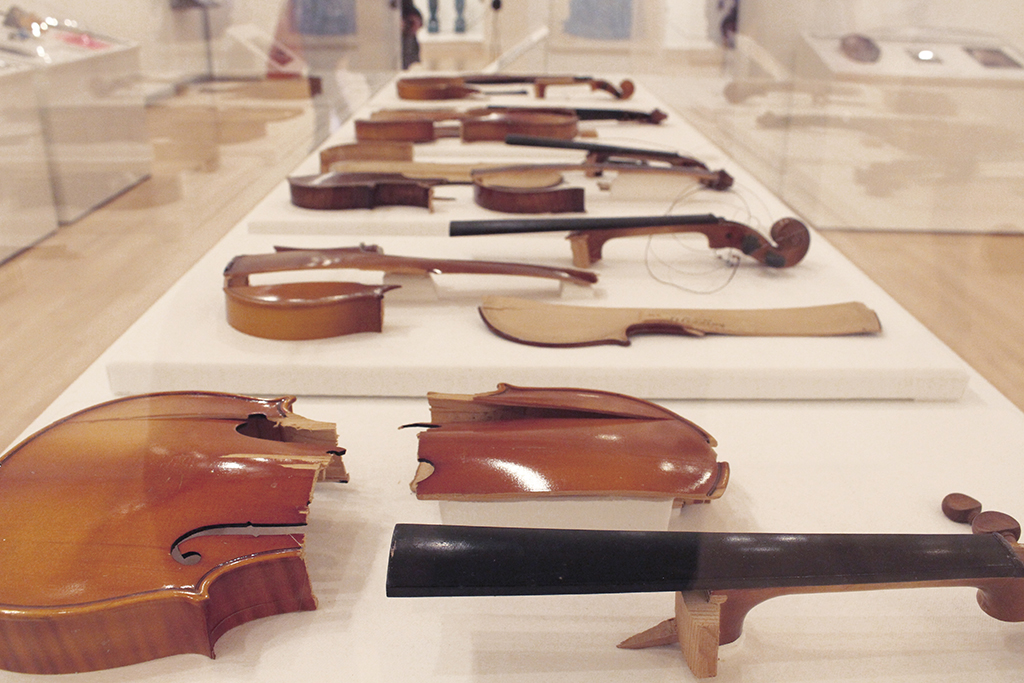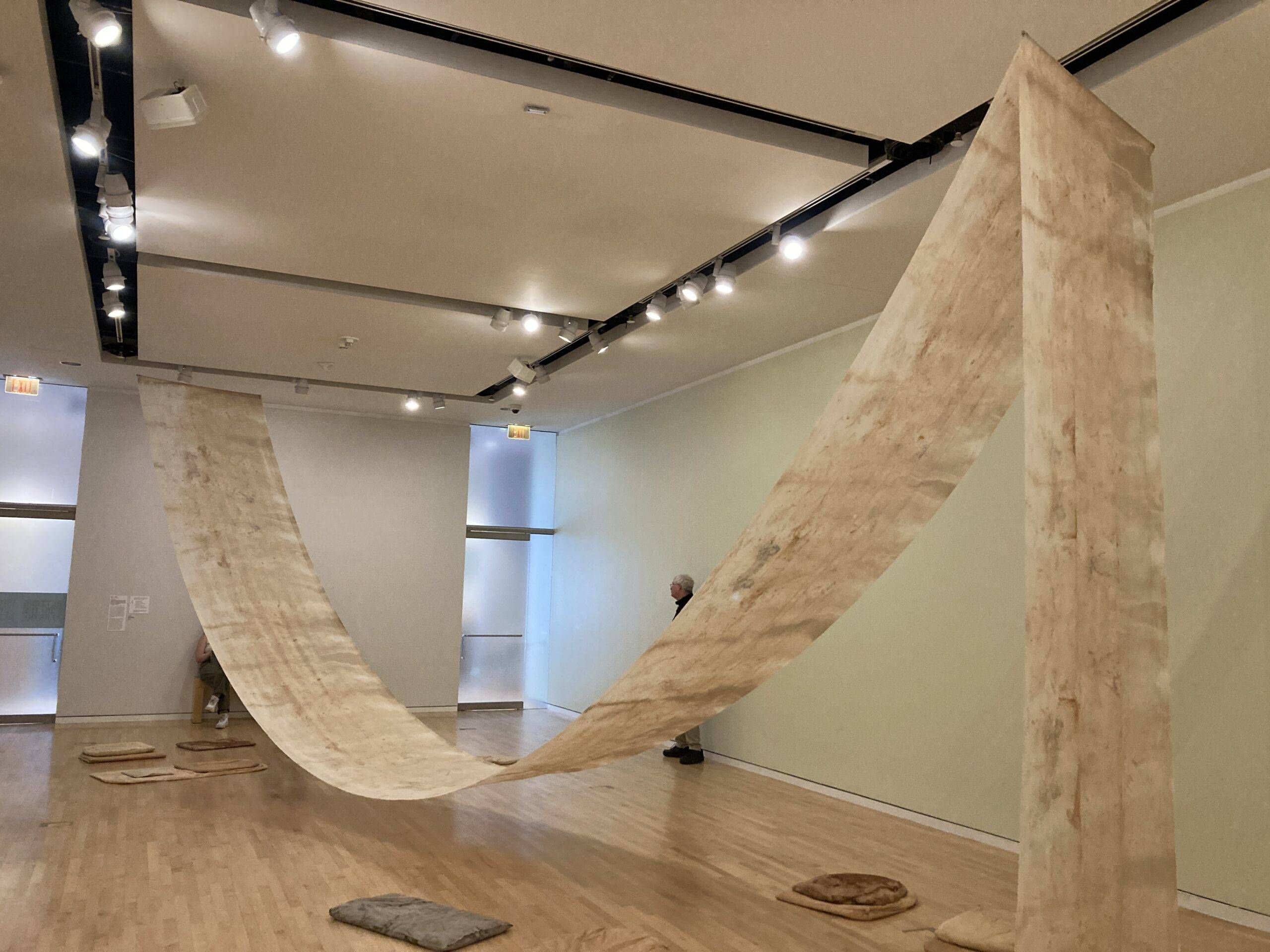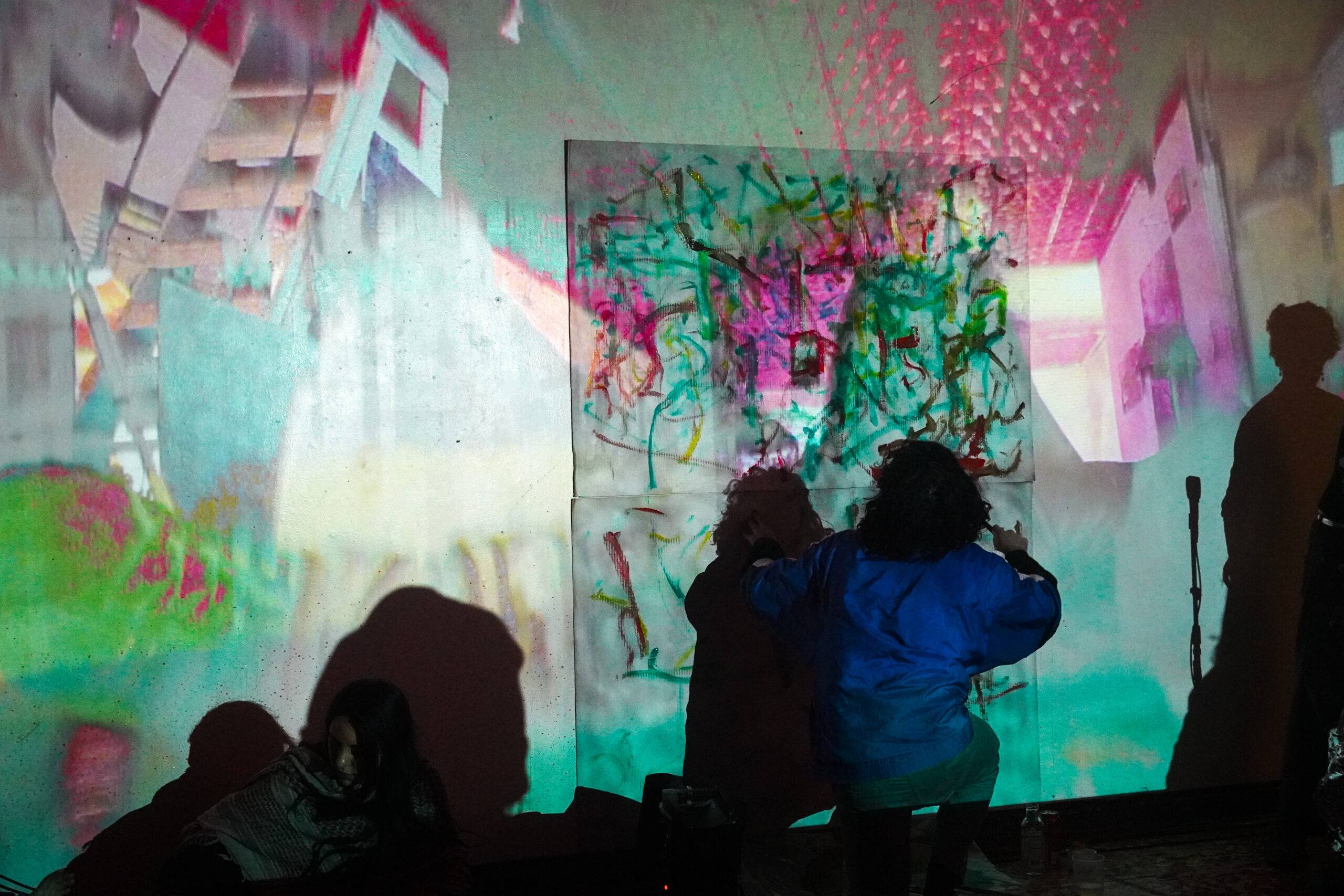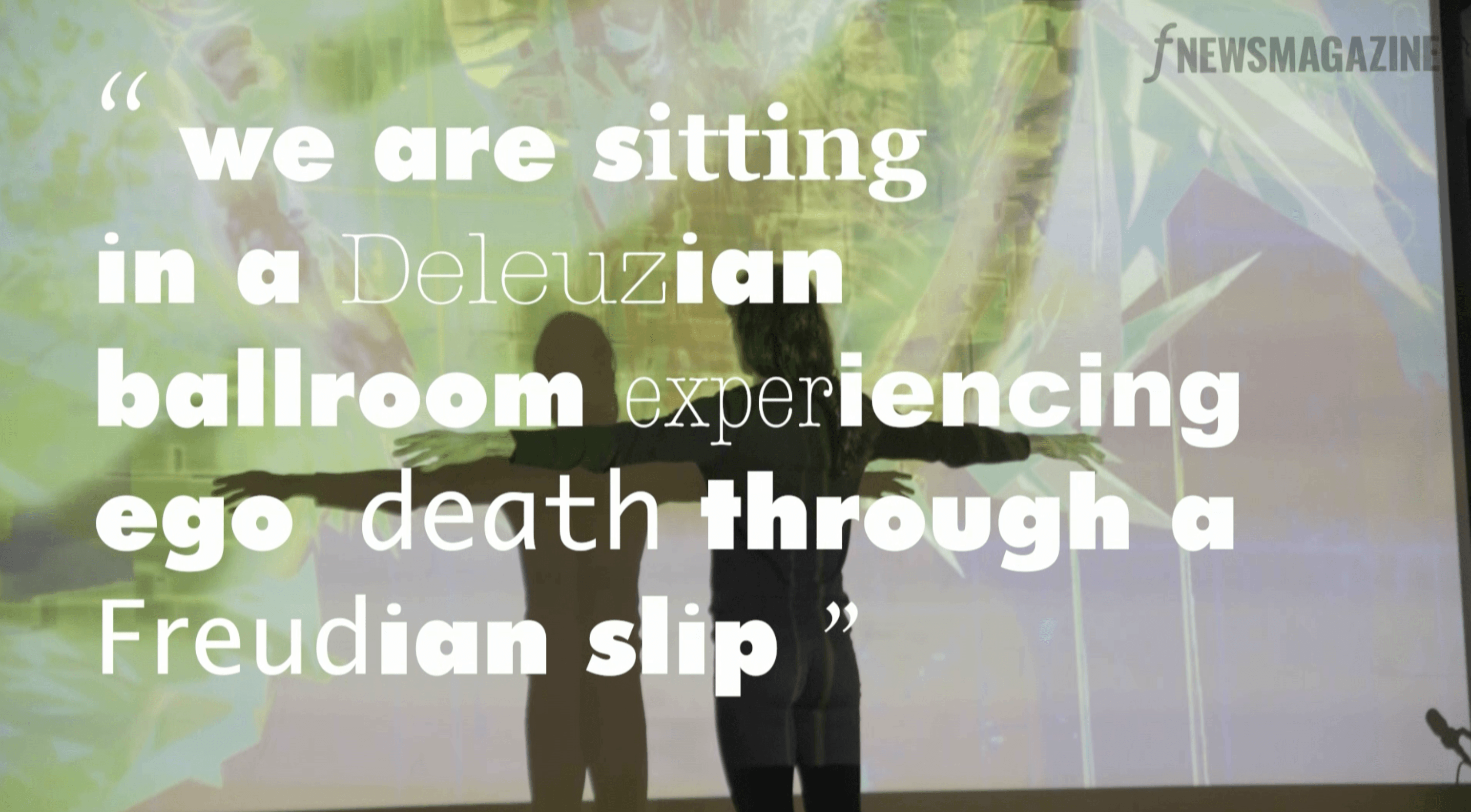
Photo by Kate Morris
This spring, Northwestern’s Block Museum will host “A Feast of Astonishments,” a rare and expansive retrospective of Charlotte Moorman, Fluxus artist and musician at the center of the radical performance art strategies of the ’60s, ’70s, and ’80s.
Upon entering the Block’s main gallery, I was immediately overcome by the staggering number of items in the collection on display. The museum gallery — one room divided by a center partition — seemed barely able to contain them. Included are videos of Yoko Ono and Carolee Schneemann, scores by John Cage, and the iconic cellos of Nam June Paik.
The Block Museum curatorial team did an excellent job of finding a balance between the object-oriented aspects of Moorman’s practice and the documentation of her work. The longest wall of the space starts with a video of her object-heavy cello collaborations with Paik, and moves into “26’1.1499″ for String Player,” a work Moorman did with Cage.
One section of the exhibition is devoted to her iteration of Ono’s “Cut Piece,” with three versions of Moorman’s dresses hung on the wall, blurring the line between painting, garment, and performance documentation.
The multimedia of the exhibition is also well treated: The viewer has access to the actual objects and scores themselves as well as film coverage of Moorman performing or being interviewed about her work.
Throughout the room, visitors are also shown quotes from Moorman in her interviews. A particularly telling quote reads:
“It’s not music. It’s a mixture: theatre, environment, cooking, lighting, everything is important. The cello sounds are only one thing,” Moorman said in a 1969 interview with Mike Douglas.
At a particular spot in the exhibition, a viewer can stand and look at the remote controlled “electric bikini” Moorman wore during her performance of “Opera Sextronique,” while simultaneously listening to her interview about performing the piece, her arrest, and the politics of censored art in New York City.
Moorman and Paik were arrested in the middle of “Opera Sextronique” for indecent exposure and spent the night in jail. She used her growing reputation as an artist who fearlessly engaged with sex and the female body in art to become a spokeswoman for the avant garde movement.
Her interviews and notes skillfully create the sense of Moorman’s magnetic personality. One gets to know Moorman through her archive — a curatorial accomplishment that also doesn’t overwhelm those who come to the exhibition for other interests, such as seeing the work of other artists included in the collection.
Moorman was both a Juilliard-educated concert cellist and a champion of the experimental music and sound performances first seen at Judson Hall in 1963. Her second New Music festival was such an expansive event it earned the moniker “a feast of astonishments,” from which the Block took the name for the retrospective. This description is fitting not only for the collection presented at the Block, but Moorman’s career as a whole.
The rare treasures of this exhibition are Moorman’s notes and plans for the NYC Avant Garde festivals. Moorman’s notes are also types of performance scores. Multicolored text, circles, and lines illustrate the flow of people, architecture, and time throughout each festival occurrence.
One glass case holds “notes” of modular styrofoam blocks labeled with events and artists. Moorman created these and used them as the planning notes for the sixth annual festival in 1968.
Many performances of the time operated by way of written scores. Moorman’s note taking style shows her sense of how three-dimensional actions present themselves on paper.
Documentation proved to be increasingly important later in Moorman’s life, especially after her cancer diagnosis. Moorman died of cancer in 1991, and since 1986 kept “pain diaries” of her activities, meals, and morphine injections. Her morphine syringes were also kept and used to create a sculpture of a cello in a piece called “Syringe Cello.” Moorman’s attention to lived experience permeated her art in every sense, making life and art indistinguishable, an unmistakable attribute of the Fluxus artists.
The only off-putting aspect of “A Feast of Astonishments” is the Block’s lack of space in accommodating this rich collection. The room of the main gallery, though skillfully used, is too small. There is not enough space to let each piece breathe before one encounters something next to it.
Though this could have been another curatorial concept, it feels as though when confronted with the choice to leave a piece out, or squeeze it between a happening and a sculpture, the curators always decided in favor of inclusion. As a viewer, I appreciate being able to see so much. I just wish the room was big enough to accommodate such a feast.





















